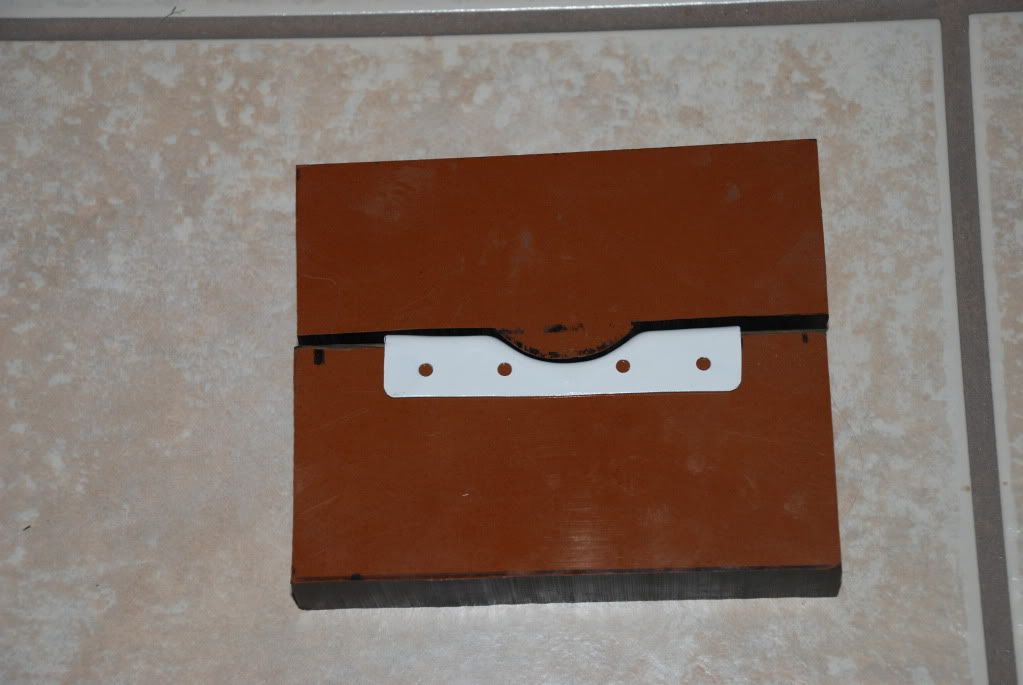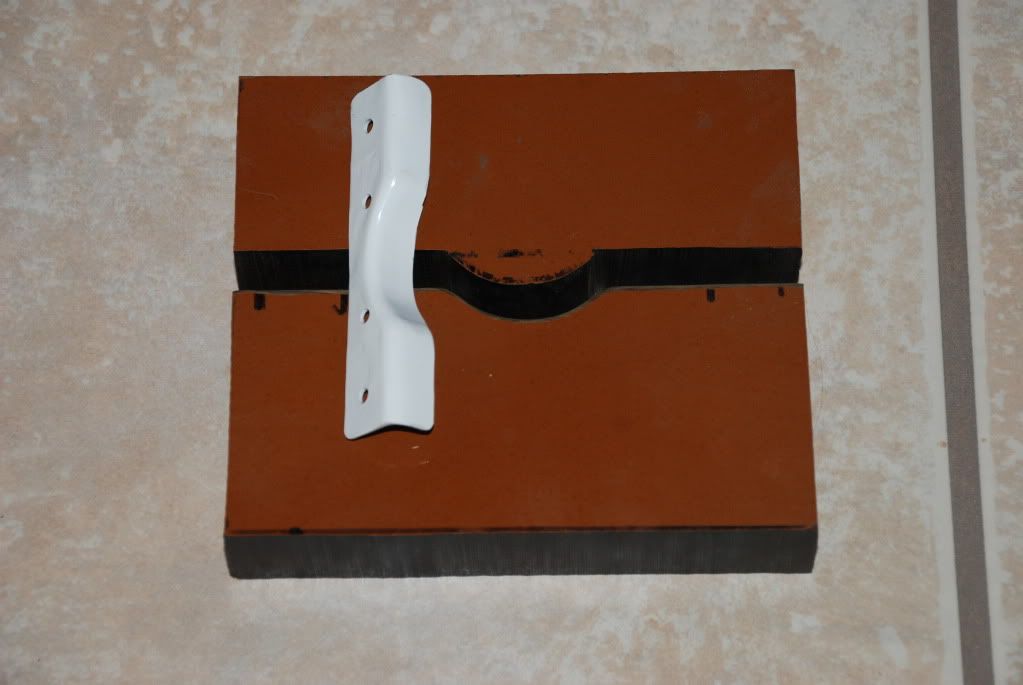Working T-0 Aluminum
Sat May 23, 2009 3:15 pm
Was going to do some aluminum forming work, and wondering if anyone has worked w/ T-0?
Thanks,
Thanks,
Sat May 23, 2009 8:49 pm
What alloy are you working with? I've used form blocks to fabricate parts from 2024-O and 7075-O. If you're making aircraft parts, be sure to heat treat them properly when you're done!
-Pat
-Pat
Sat May 23, 2009 9:20 pm
What alloy are you working with? I've used form blocks to fabricate parts from 2024-O and 7075-O. If you're making aircraft parts, be sure to heat treat them properly when you're done!
Most likely 2024. So how pliable is it? What other material is it reminiscient of?
Sat May 23, 2009 10:31 pm
2024-O is very easy to work with; 7075-O is a little more difficult, but not much. I don't know which method you will be using, but most of my experience has been with form blocks and a micarta or wood wedge (with the pointed end rounded off to keep from marring the metal) and a hammer or mallet.
I've attached a picture of a door part I made from 2024-O for a Boeing or Douglas product, I can't remember which. This particular one is scrap; the others I made looked better than this one.
I've attached a picture of a door part I made from 2024-O for a Boeing or Douglas product, I can't remember which. This particular one is scrap; the others I made looked better than this one.
Last edited by Pat on Mon Sep 13, 2010 9:36 pm, edited 1 time in total.
Sat May 23, 2009 10:51 pm
Hi Pat:
Yes, I've used a piece of slotted Micarta to form a bent flange in 2024-T3 Al. So I hear 2024 T-0 is alot like putty in consistency. Is that correct?
Where do you find T-0? How much is it per foot?
Can you show a picture of one of your molds here?
THanks,
Yes, I've used a piece of slotted Micarta to form a bent flange in 2024-T3 Al. So I hear 2024 T-0 is alot like putty in consistency. Is that correct?
Where do you find T-0? How much is it per foot?
Can you show a picture of one of your molds here?
THanks,
Sat May 23, 2009 11:19 pm
2024-O is not like putty; it's like 2024-T3, but without the "spring" to it (it's easier to bend by hand).
As far as price and availability of xxxx-O, I have no idea since it was supplied at the two airlines and repair station that I previously worked for. Wick's or Aircraft Spruce may carry it.
I don't think I have any form blocks left, but I'll check.
-Pat
As far as price and availability of xxxx-O, I have no idea since it was supplied at the two airlines and repair station that I previously worked for. Wick's or Aircraft Spruce may carry it.
I don't think I have any form blocks left, but I'll check.
-Pat
Sat May 23, 2009 11:42 pm
I hope it bends much easier than T-3. I tried putting a curved bend in T-3 and that didn't work. So do you know how to get a curved bend like you have in your photo w/ T-0?
Sun May 24, 2009 9:10 am
A2C, what are youi going to make? Why 2024 vs 3003? Do you plan to heat treat the parts when finished?
Can you show a sketch of what you are making?
Can you show a sketch of what you are making?
Sun May 24, 2009 9:51 pm
A2C-
I happened to find the form blocks I used to make the part pictured in my previous post... I made a male and female block for the semicircular shape.

Then I stood the two form blocks vertically and put a piece of 2024-O (larger than actually required for the part) between the two form blocks, held the blocks and sheetmetal together as I ran a hydraulic press down on the top form block. This formed the semicircular part and made a nice twisted mess. The beauty of working with 2024-O is that it can be worked into shape with a hammer and block of wood or micarta, or even a dead blow hammer. I worked the adjacent flange down with the above methods and trimmed the part to size and heat treated it. Sometimes, due to the severe heat warping the part, it's better to trim the part to size after heat treating.


I happened to find the form blocks I used to make the part pictured in my previous post... I made a male and female block for the semicircular shape.

Then I stood the two form blocks vertically and put a piece of 2024-O (larger than actually required for the part) between the two form blocks, held the blocks and sheetmetal together as I ran a hydraulic press down on the top form block. This formed the semicircular part and made a nice twisted mess. The beauty of working with 2024-O is that it can be worked into shape with a hammer and block of wood or micarta, or even a dead blow hammer. I worked the adjacent flange down with the above methods and trimmed the part to size and heat treated it. Sometimes, due to the severe heat warping the part, it's better to trim the part to size after heat treating.


Mon May 25, 2009 1:29 am
Hi Pat:
Thanks for posting those photos. So your order of operations was to put the curve in using the hydraulic press vertically, and then pressing the flange after flipping the mold to the horizontal? Or did you put the curve in vertically, and hammer in the flange?
So the question I have is if the T-0 material shrinks and stretches easily? T-3 definitely doesn't.
Thanks,
Thanks for posting those photos. So your order of operations was to put the curve in using the hydraulic press vertically, and then pressing the flange after flipping the mold to the horizontal? Or did you put the curve in vertically, and hammer in the flange?
So the question I have is if the T-0 material shrinks and stretches easily? T-3 definitely doesn't.
Thanks,
Mon May 25, 2009 1:40 am
Sdennison wrote:
Hi, thanks for asking, I was just curious about what it would take to make a round or oval shaped aircraft bulkhead. I don't have anything specific in mind yet, just want to see what it would take.
If using T-0, I would then do the necessary heat treatment using an autoclave and necessary quenching.
A2C, what are youi going to make? Why 2024 vs 3003? Do you plan to heat treat the parts when finished?
Can you show a sketch of what you are making?
Hi, thanks for asking, I was just curious about what it would take to make a round or oval shaped aircraft bulkhead. I don't have anything specific in mind yet, just want to see what it would take.
If using T-0, I would then do the necessary heat treatment using an autoclave and necessary quenching.
Mon May 25, 2009 9:05 am
Cool. If you need material, Aircraft Spruce has nearly everything you would need listed in their "aluminum" link. I bought a sheet of 3003 from tham awhile back, sheared and shipped to my home shop. Very easy to handle.
Keep us up on what you are doing.
Keep us up on what you are doing.
Mon May 25, 2009 8:17 pm
A2C wrote:Hi Pat:
Thanks for posting those photos. So your order of operations was to put the curve in using the hydraulic press vertically, and then pressing the flange after flipping the mold to the horizontal? Or did you put the curve in vertically, and hammer in the flange?
So the question I have is if the T-0 material shrinks and stretches easily? T-3 definitely doesn't.
Thanks,
A2C-
Yes, I put the curve in using the hydraulic press vertically, and I then hammered the flange down while the whole conglomeration was held together with the press. I guess I could have laid the form blocks and sheetmetal horizontally in a large vise and then hammer on it.
The -O material does shrink and stretch considerably easier than -T3, although -T3 can be shrunk/stretched to a lesser degree than was required for the fabrication of the part pictured with a high quality shrinking/stretching machine.
-Pat
Mon May 25, 2009 8:23 pm
Thanks Pat:
That's what I wanted to know. Yes, I tried to stretch 2024 T-3 and it didn't work too well. I tried to make a piece similar to yours and it warp in the vertical and horizontal. It didn't like the compound bend.
That's what I wanted to know. Yes, I tried to stretch 2024 T-3 and it didn't work too well. I tried to make a piece similar to yours and it warp in the vertical and horizontal. It didn't like the compound bend.
Mon May 25, 2009 9:40 pm
I also observed with a part from a manufacturer (another compound bend) that in places where it was shrunk that it almost looks like it was formed out of putty, like varying thicknesses, etc. It's actually thicker where it was shrunk and thinner where it was stretched. Interesting stuff.